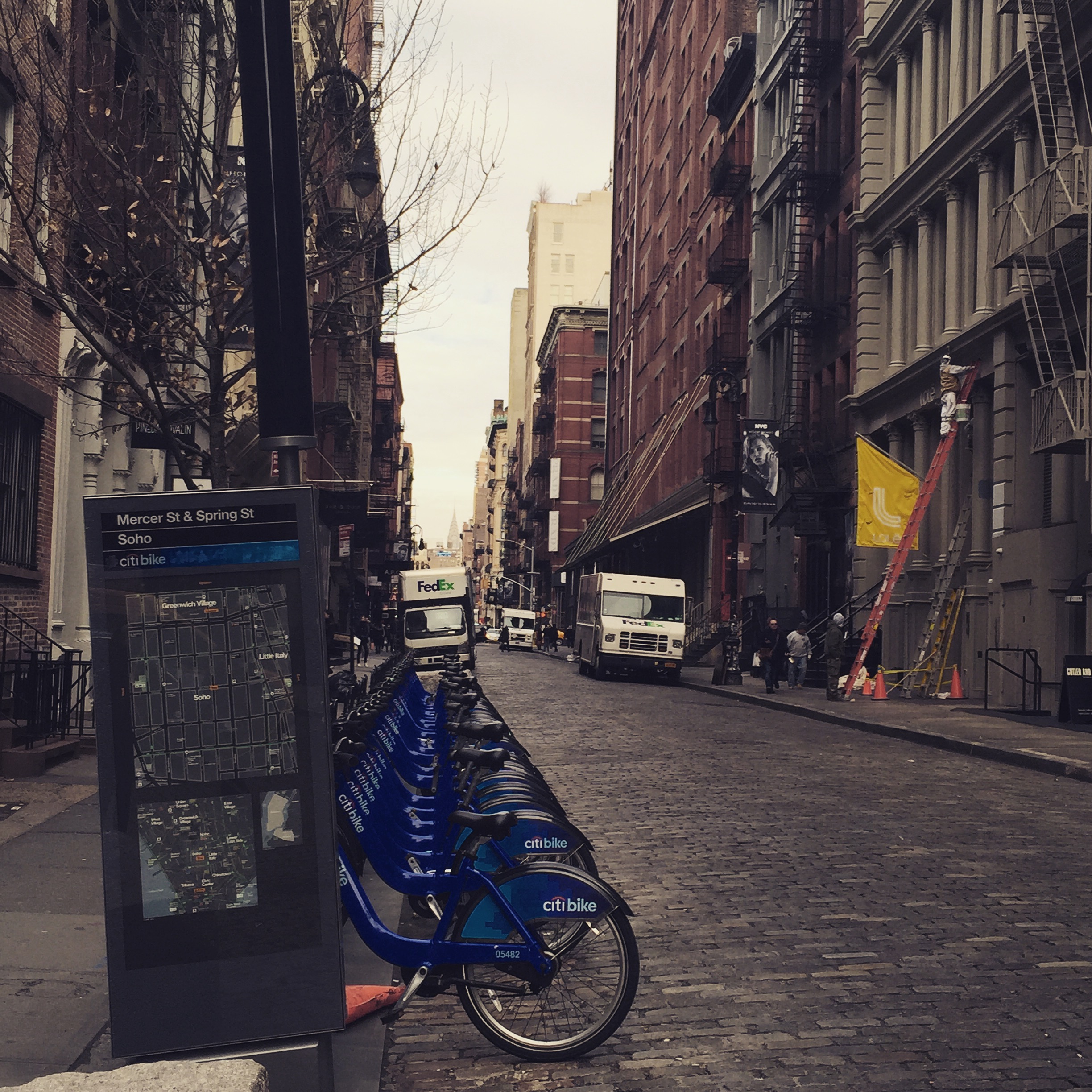Soho

Before Tribeca (TRIangle BElow CAnal), Dumbo (Down Under Manhattan Bridge Overpass), Nolita (North of Little ITAly), or Nomad (North of MADison Square Park), there was SoHo (South of Houston Street). Although London’s Soho isn’t a shortened version of anything (it might be based on a hunting cry but has been a place name there since the early 1600’s so no one really knows), Manhattan’s Soho started the trend of cute acronyms for neighborhood names in the city. Today’s dérive (an unplanned walk in an urban environment) takes place in this cool downtown neighborhood.
Although today we know it as a beautiful area full of artists’ lofts and galleries, and as an upscale shopping destination, Soho in lower Manhattan has an interesting history. Originally a community for freed slaves of the Dutch East India Company in the 1600’s, this was the first settlement for people of color in the city. Surrounded by swampland and a canal, the area was not widely settled until the canal was filled in and became Canal Street. Becoming an industrial center in the mid-1800’s, most of the neighborhood’s characteristic cast iron buildings (the actual name of the historic district is Soho-Cast Iron) were created between 1840 and 1800. Originally used as a building material because cast iron was cheaper than stone or brick (but could be painted to resemble stone), cast iron was also easily molded and allowed for elaborate decoration around the large windows, themselves possible because of the strength of cast iron. With industry moving out of the area, the neighborhood fell into decline, until the 1960’s when artists looking for large spaces with plenty of natural light began to move in. Although originally the artists’ lofts were not zoned for residential living, eventually the city recognized the change that had occurred, and since the 1980’s, the neighborhood has become one of the city’s wealthiest.
Roughly bounded by (naturally) Houston Street to the north, Canal Street to the south, Crosby Street to the east, and Sixth Avenue to the west, I began this dérive on Houston and Crosby, walking south and turning west on Prince Street. Although Soho is surrounded by Greenwich Village, Little Italy, and Tribeca on various sides, and shares certain similarities with each, it also has its own distinctive feel. The neighborhood is full of architecturally significant buildings, many quite unique. The Little Singer Building (named because a few years after it was built in 1903, the Singer Company also built what was for a few years the tallest building in the world – and which was destroyed in 1967 before it could be landmarked), for instance, is now a combination of office spaces and artists’ lofts. It is covered in elaborate wrought iron decoration, terra cotta panels, and cast iron ornamentation. At Prince and Greene, one entire side of a building is painted in a trompe l’oeil façade of a cast iron building.
Prince and Spring Streets, particularly the areas near Broadway, are full of upscale shopping experiences. Dominique Ansel Bakery, famous for being the home of the cronut, is on Spring between Sullivan and Thompson. People line up between 7AM and 8AM every day to get the limited supply of cronuts (2 per person, only one type made per month), but don’t neglect the bakery later in the day – they make delicious treats in addition to the elusive cronuts!
While on Spring Street, glancing south when crossing Thompson Street reveals a beautiful view of One World Trade. Continuing east on Spring, I appreciated crossing the charming cobblestoned streets. Although all of SoHo would have been originally cobblestoned, only those streets still paved with Belgian blocks when the area was landmarked (a few of the north-south streets such as Mercer, Crosby, and Wooster Streets) remain as such. Seeing a row of Citibikes ready for rental, I imagine that cobblestoned streets and bicycling might not be the best pairing!
Soho becomes less hectic as you get away from Houston. Heading south on Mercer Street, It’s hard to imagine that plans to build two large elevated highways linking the Manhattan and Williamsburg Bridges with the Holland Tunnel were narrowly averted in the 1960’s. Fortunately, the value of this lovely area and its concentration of ornate cast iron buildings was recognized in time to preserve Soho for us to enjoy now and in future generations.








